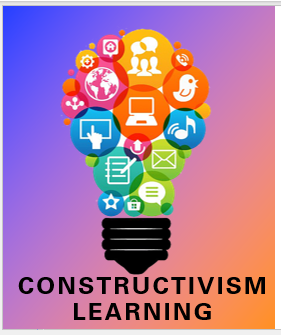Constructivism, in the simplest of terms, means that individuals are constructing new information or knowledge built upon old information or knowledge. This theory emphasizes that learning is not a passive event. It is active. It requires effort.
Constructivism is a powerful theory to empower students in pursuing knowledge and understanding as they apply what they learn. It is important as students and individuals start to use information. They apply what they know. They climb that, at times, elusive Bloom’s taxonomy. As an educator, what could be more important than witnessing students actually using new knowledge?
Of course, there are significant benefits to using constructivism. As already mentioned, the greatest benefit is the recognition of new knowledge being used in more than merely being acquired. Individuals are encouraged to and promoted, in a natural way, to through the stages of Bloom’s taxonomy. This new knowledge is then transferrable to new situations in contrast to knowledge used in isolation. The individual will apply this information new situations or other settings.
Another valuable benefit is how the learning becomes owned by the individual. No longer is the student a passive recipient, like tabula rasa. The student is responsible, involved, encouraged, promoted to own their learning. They take the initiative to discover more about the topic at hand while creating real-world contexts. This type of learning, constructivism, leads to more enjoyable learning.
An important aspect is how students learn to expand, grow and collaborate with others. They learn how to communicate their ideas and to make connections. They are empowered to use their new knowledge and not simply wait upon the ‘expert’ or instructor to tell them how to use the knowledge.
There are a few different types of constructivism including:
- Cognitive
- Social
- Radical
Cognitive refers to learning and developing an individual’s ability to learn and embed new information into existing schemas.
Social refers to social situations. Think about how cultures interact, social mores, peer interactions and how individuals relate to each other.
Radical is a theory that all information or knowledge is merely invented which makes it impossible for anyone to truly find or understand truth.
Constructivism is vastly different in application than other types of theories in that the learner is the owner of the knowledge and learning experience. The students are the focus. They set the pace. The classroom focuses on their learning in every instance through collaborative practice, journaling, reflective practice and even modeling.
Before applying constructivism, it is essential to recognize that there are drawbacks. One of the greatest drawbacks is the time constraints. Many educators have recognized that the process of using constructivism techniques in the learning process takes longer than more passive means. (Of course, don’t forget that the information will be embedded into the schema of existing knowledge and used with greater efficiency than other more passive means of learning. The question comes down to ROI – the return on investment. Does the cost of time to learn through constructivism methodologies balance the expense?)
Recall that knowledge is personal. Individuals must make knowledge part of them. They need to make connections that are important to them. They need to know how the information is pertinent to them. With this in mind, constructivism is motivating. It encourages and builds the individual, developing them in personal and professional means.
This is where reflective practice can come in.


Comments are closed